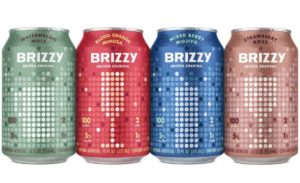Second COVID Relief Bill Brings Relief to Trademark Plaintiffs, Expressly Restoring Presumption of Irreparable Harm to Trademark Cases
By Patrick Mulkern on February 11, 2021
Leave a comment
Author: Patrick Mulkern
On December 27, 2020, the President signed the Consolidated Appropriations Act for 2021. Although this legislation garnered considerable attention for its COVID-related relief provisions, it also incorporated the Trademark Modernization Act of 2020 (“TMA”)—first introduced back in March of 2020 as H.R. 6196. The TMA makes several sweeping changes to the trademark examination process, including new methods to address the growing number of registrations covering marks not actually used in commerce; protects the administrative law judges of the Trademark Trial and Appeal Board against certain challenges; and reinstates the presumption of irreparable harm (for those Circuits that had rejected it in recent years). On the whole, commentators speculate the changes brought about by the TMA may turn out to be some of the most consequential changes in the last thirty years.
Part I – Restoration of Presumption of Irreparable Harm
First, and foremost, the TMA expressly restores the presumption of irreparable harm that trademark infringement plaintiffs used to enjoy prior to the Supreme Court’s decision in eBay v. MercExchange, LLC, 547 U.S. 388 (2006). Specifically, the TMA amends the Lanham Act to state a “plaintiff seeking an injunction shall be entitled to a rebuttable presumption of irreparable harm” upon a finding of a violation or likelihood of success. See H.R. 6196 § 6 (amending 15 U.S.C. § 1116) (emphasis added). This change directly addresses a circuit split in how some trademark plaintiffs were treated when seeking injunctive relief—codifying what some Circuits (i.e., Fifth and Eighth) already applied in trademark litigation, and rejecting what other Circuits (i.e., Third, Ninth, and Eleventh Circuits) had been doing post-eBay. Prior to the TMA, a trademark owner’s change of success in obtaining injunctive relief was therefore entirely dependent on the geographic location of its case—clearly encouraging forum shopping. Now, such inconsistencies should be resolved.
Two questions remain, however, with respect to the presumption. One, while the other sections of the TMA expressly state when they are to become effective (see infra), the irreparable harm portion of the TMA contains no such express language. Instead, Section 6(b) of the TMA simply states that this amendment “shall not be construed to mean that a plaintiff seeking an injunction was not entitled to a presumption of irreparable harm before the date of the enactment of this Act.” While not a paragon of clarity, this language appears to invoke arcane and technical rules regarding “enactment” more fit for Schoolhouse Rock1—all of which suggest the presumption was restored the moment the President signed the bill into law.2 It is possible this language may result in a deluge of motions for reconsideration similar to those seen in the patent context following the Supreme Court’s ruling on venue in T.C. Heartland LLC v. Kraft Foods Grp. Brand LLC, 137 S.Ct. 1514 (2017).
Two, there is uncertainty with respect to whether the “restored” presumption shifts the burden of persuasion or merely the burden of production. It would appear that the presumption that existed prior to eBay was merely one of production—with courts requiring the movant satisfy its burden of persuasion in establishing irreparable harm.3 The default, as provided for by the Federal Rules of Evidence, further supports such an interpretation—with Fed. R. Evid. 301 explaining that any presumption is one “of producing evidence to rebut the presumption” and “does not shift the burden of persuasion.” Ultimately, notwithstanding the presumption, a defendant could potentially put the onus back on plaintiff where the defendant is able to present prima facie evidence regarding the lack of irreparable harm.
Part II – Changes to TM Examination and Post-Registration Review Processes
Next, the TMA provides changes to both inter partes trademark examination procedures and ex parte challenges to existing registrations.
1. Codification of Letters of Protest Procedures
Section 3 of the TMA expressly permits submission of third party evidence, formalizing the previous “Letters of Protest” process. The new formalities now require the submission include a description/identification of the relevant ground for refusal and requires the PTO to act on any such submissions within two months. The amendments also permit the PTO to charge a fee for submitting such evidence.
2. Allowing Shortened Time to Respond to Office Actions
Section 4 of the TMA amends the previously ubiquitous six month deadline for responses to office actions, and grants the PTO authority to prepare and promulgate regulations which will govern how and what the new/different response periods will be. The new response deadlines will range from two to six months, and the TMA also allows for extensions of time under those same forthcoming regulations.
3. Ex Parte Challenges to Subsisting Registrations
Section 5 of the TMA creates two new avenues for cancelling registrations, both of which serve as ex parte alternatives to traditional cancellation proceedings—all meant to address the growing concern of an overcrowded registration. The first, creating a new Section 16A entitled “Ex Parte Expungement,” allows for the expungement of registrations that have never been used in commerce. Challenges under this new section can be filed during the first 3 years of a registration’s existence. The second, creating a new Section 16B entitled “Ex Parte Reexamination,” allows for a challenge to registrations that were not in use (a) as of the date of first claimed use, or (b) when the application was filed. Challenges under this new section can be filed during the first 5 years of a registration’s existence. As above, the PTO Director was also authorized to develop and promulgate enacting regulations.
Unlike the changes identified above in Section 6 (restoring the presumption of irreparable harm), the changes enacted in Sections 3, 4, and 5 are all set to take effect in one year. This will provide the PTO time to ramp up the administrative infrastructure needed to implement these changes.
Part III – Confirming Independence of TTAB ALJs
Finally, Section 8 of the TMA provides express statements regarding the scope of the PTO Director’s authority with respect to the administrative law judges (ALJs) of the Trademark Trial and Appeal Board (TTAB). Specifically, it amends the Lanham Act to entrust the Director with “the authority to reconsider, and modify or set aside, a decision of the Trademark Trial and Appeal Board.” The changes, of course, do not require the Director to reconsider, modify, or set aside any particular TTAB decisions—it simply provides the Director authority to do so. These changes come in response to recent challenges in which litigants have attempted to argue that the TTAB’s ALJs are unconstitutional “Officers of the United States” (as they are not confirmed by the Senate) because of a perceived lack of control by the PTO Director.4
Conclusion
While the restoration of the presumption of irreparable harm may capture the most attention, and despite providing harmony to the circuits in resolving a long-standing split, it is unclear whether such a change will result in much change in practice. Its most lasting effect may simply be one of procedure—reducing the amount of forum shopping. For trademark prosecutors, the changes to examination procedures are much more likely to have real world, day-to-day impact—with suddenly differing deadlines (no longer uniform 6 month responses), formalized requirements for Letters of Protest submissions, and new methods of seeking cancellation of unused registrations.
About the author: Patrick J. Mulkern is senior counsel and a member of Gordon Rees Scully Mansukhani’s Intellectual Property Practice Group. His practice focuses on intellectual property litigation and transactional matters, with a particular emphasis on patent, trademark, and trade secret litigation. Mr. Mulkern is a registered patent attorney and his biography can be found here.
________________________________________________________________________
1 See Lander and Berkowitz, P.C. v. Transfirst Heatlh Servs., Inc., Case No. 05-cv-527 (E.D. Mo.), Dkt. 21 at n.1 (holding the date of a law’s “enactment” was “the day when it was signed into law by the President” and observing: “Although it is certainly not binding precedent, the parties may recall a popular episode of the television series Schoolhouse Rock” titled I’m Just a Bill. In that episode, Bill sang, “I’m just a bill/Yes, I’m only a bill/And if they vote for me on Capitol Hill/Well, then I’m off to the White House/Where I’ll wait in a line/With a lot of other bills/For the president to sign/And if he signs me, then I’ll be a law/How I hope and pray that he will/But today I am still just a bill.”).
2 See, e.g., Gozlon-Peretz v. United States, 498 U.S. 395, 404 (1991) (“It is well established that, absent a clear direction by Congress to the contrary, a law takes effect on the date of its enactment.”); Garnder v. Collector of Customs, 73 U.S. 499, 406 (1867) (“The simple signing of his name at the appropriate place is the one act which the Constitution requires of [the President] as the evidence of his approval, and upon his performance of this act the bill becomes a law.”).
3 See, e.g., Peter Letterese & Assoc., Inc. v. World Inst. of Scientology Enterps., Inc., Case No. 04-cv-1178, 2005 WL 8167094, at *1 (S.D. Fla. May 27, 2005) (finding plaintiff failed to establish irreparable harm despite presumption).
4 See Schiedmayer Celesta GmbH v. Piano Factory Grp., Case No. 2020-1196 (Fed. Cir. No. 8, 2019); Coca-Cola Co. v. Somohano-Soler, Case No. 2020-1245 (Fed. Cir. Nov. 27, 2019).



 On September 1, 2019, Future Proof launched “Brizzy,” a seltzer cocktail offering consumers a refreshing alcoholic beverage with only 100 calories, 2 carbs, 1 gram of sugar and 5% alcohol by volume. Brizzy flavors include Watermelon Mule, Strawberry Rose, and Mixed Berry Mojito. Future Proof applied to register the Brizzy mark with the USPTO in November 2018. Originating in Austin, Texas, the products can now be found in over 1,000 retail locations in four states with plans to expand into more states this year.
On September 1, 2019, Future Proof launched “Brizzy,” a seltzer cocktail offering consumers a refreshing alcoholic beverage with only 100 calories, 2 carbs, 1 gram of sugar and 5% alcohol by volume. Brizzy flavors include Watermelon Mule, Strawberry Rose, and Mixed Berry Mojito. Future Proof applied to register the Brizzy mark with the USPTO in November 2018. Originating in Austin, Texas, the products can now be found in over 1,000 retail locations in four states with plans to expand into more states this year. Molson Coors’s hard seltzer, “Vizzy,” is advertised as “the only hard seltzer with antioxidant Vitamin C.”2 It similarly offers 100 calories, 2 carbs, 1 gram of sugar and 5% alcohol by volume. In September 2019, Molson Coors filed an application to register the Vizzy trademark. Vizzy flavors include “hint of” pineapple mango, black cherry lime, blueberry pomegranate, and strawberry kiwi.
Molson Coors’s hard seltzer, “Vizzy,” is advertised as “the only hard seltzer with antioxidant Vitamin C.”2 It similarly offers 100 calories, 2 carbs, 1 gram of sugar and 5% alcohol by volume. In September 2019, Molson Coors filed an application to register the Vizzy trademark. Vizzy flavors include “hint of” pineapple mango, black cherry lime, blueberry pomegranate, and strawberry kiwi.